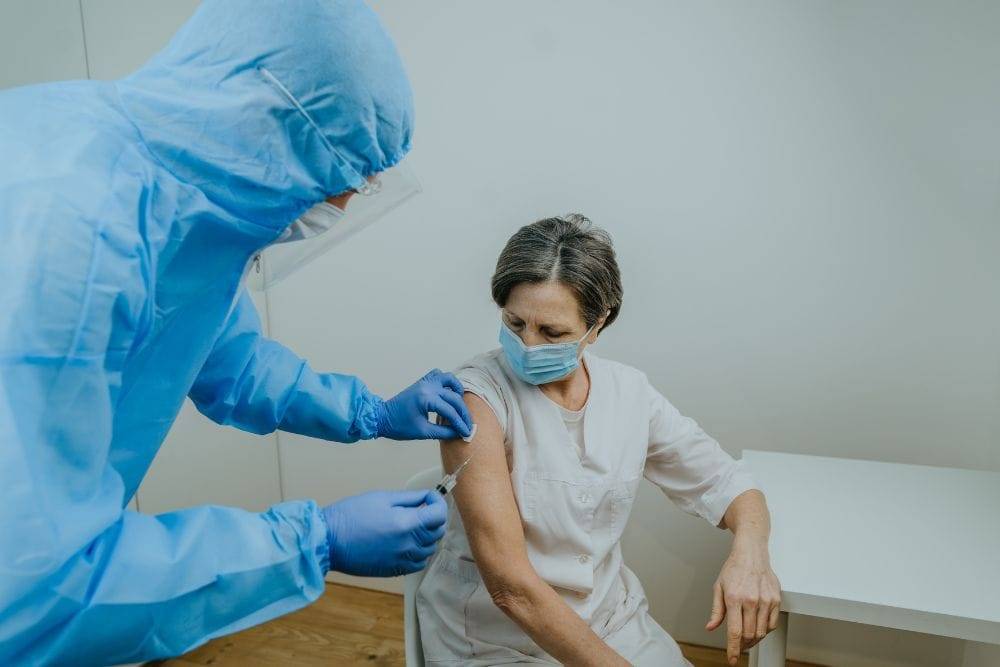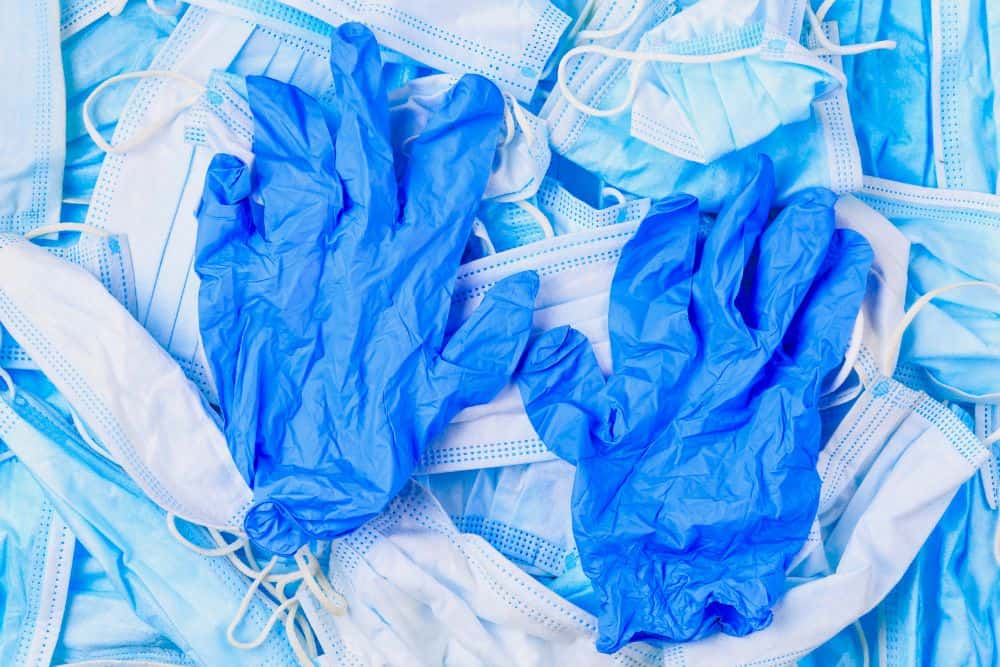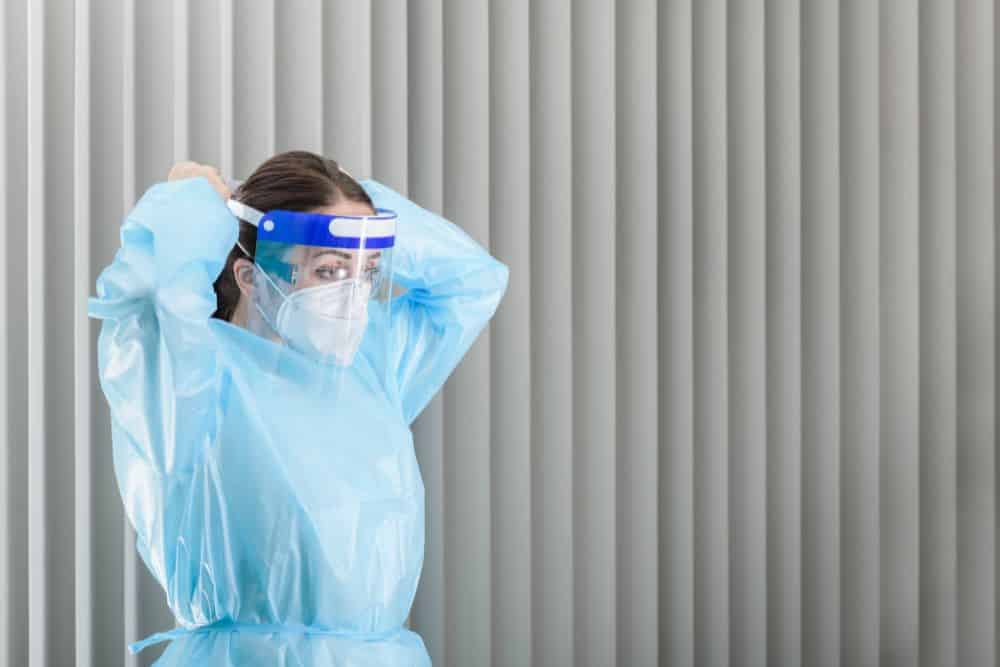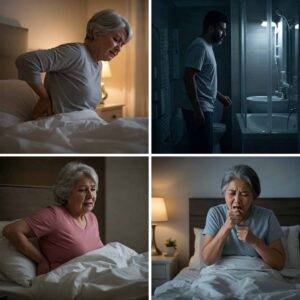
Personal Protective Equipment (PPE) is very important in senior care settings because it helps protect both caregivers and seniors from illnesses and infections. Seniors often have weaker immune systems, which makes them more likely to get sick.
From our collective experience of Covid 19, we know that PPE, such as gloves, masks, gowns, and face shields, creates a barrier to stop germs and viruses from spreading.
For example, wearing gloves can prevent the spread of bacteria when helping a senior with personal care. Masks can stop germs from spreading through the air when someone coughs or sneezes. This keeps everyone healthier and safer, especially in places where people live close together, like Amy’s Eden Senior Care homes.
Using PPE correctly shows care and respect for seniors’ health and helps create a safe environment for everyone. Additionally, being prepared with enough PPE means that our facilities are able to receive visitors even if there is a need for isolation or a lockdown due to an outbreak.
Types of Personal Protective Equipment
There are several types of Personal Protective Equipment, each of which plays an important role in preventing the spread of infections:
- Gloves protect hands from contact with germs on surfaces, bodily fluids, or other potentially harmful materials. They prevent the spread of bacteria and viruses through touch, especially during personal care tasks like bathing or changing dressings.
- Masks worn over the nose and mouth help block germs from spreading through the air. They stop droplets from coughing, sneezing, or talking from spreading to others.
- Face Shields or Goggles protect the eyes from splashes or sprays of fluids. Face shields and goggles reduce the chance of germs entering through the eyes, especially during medical procedures.
- Gowns or Aprons are worn over the clothes and skin to prevent contamination from fluids or germs. The cover they provide keeps germs from sticking to clothing and spreading to others.
- Shoe Covers help avoid tracking germs across floors and thus help keep living areas clean and reduce the spread of bacteria.
- Hair Covers or Nets prevent individual hairs from falling and spreading germs. Hair covers are helpful in places like surgery or when cleanliness is of utmost importance.
Using the right PPE at the right time protects both caregivers and those they care for. It’s an important step to stop infections and keep everyone safe.
Along with picking the right equipment, proper use and disposal are crucial in preventing the spread of infections, especially in senior care settings.
PPE can be effective only if it’s worn correctly. For example, a mask that doesn’t cover the nose won’t block germs properly.
Any used PPE can carry harmful germs; therefore, it should be disposed of safely. Throwing it away in designated bins keeps care areas clean and prevents those germs from spreading to others or the environment.
Regulations Related to PPE
Occupational safety and health regulations related to Personal Protective Equipment (PPE) in senior care facilities are designed to protect both workers and residents. These regulations set standards for the use, maintenance, and disposal of PPE.
1. OSHA Standards (Occupational Safety and Health Administration)
The U.S. Occupational Safety and Health Administration (OSHA) outlines the following PPE requirements:
- Provision of PPE – Employers must provide necessary PPE (e.g., gloves, masks, gowns) at no cost to workers.
- Hazard assessment – Facilities must be assessed for workplace hazards to determine the type of PPE needed.
- Training – Workers must be trained on when and how to use PPE, including proper donning (putting on) and doffing (taking off).
- Maintenance – PPE must be kept in good condition, regularly inspected, and replaced if damaged.
2. Bloodborne Pathogens Standard
This standard focuses on protecting workers from exposure to infectious materials, such as blood or bodily fluids:
- PPE like gloves, face shields, and gowns must be used whenever contact with blood or other potentially infectious materials is possible.
- Employers must have a written Exposure Control Plan and provide PPE as part of it.
3. Infection Control Guidelines (CDC)
The Centers for Disease Control and Prevention (CDC) infection control protocols for senior care facilities include:
- Use of PPE is mandatory during outbreaks (e.g., flu, COVID-19) to protect both staff and residents.
- Facilities must follow “Standard Precautions,” which assume that all bodily fluids could be infectious, requiring consistent use of PPE.
- Implementing “Enhanced Barrier Control” is recommended for long-term care facilities as the risk of contamination with multi-drug resistant organisms (MDRO) is higher.

4. Disposal and Waste Management Rules
- PPE are of two types – disposable and reusable. Contaminated with infectious materials, PPE must be disposed of in labeled biohazard containers.
- To remove PPE safely, take it off without touching it outside. For example, remove gloves by peeling them inside out and masks by handling the straps, not the front. Next, place PPE in a plastic bag and tie it tightly. Most disposable PPE can go in regular trash unless contaminated with hazardous substances. If the PPE has been used in healthcare or exposed to infectious materials, follow local hazardous waste disposal guidelines.
- Employers must comply with local, state, and federal regulations for handling and disposing of medical waste.
5. State and Local Regulations
Similarly to the State of Nevada, many states have additional requirements for senior care facilities:
- Regular audits and inspections ensure compliance with PPE standards.
- Emergency preparedness plans often include specific PPE protocols for handling outbreaks or disasters.
By following these regulations, Amy’s Eden Senior Care creates a safer workplace environment and protects vulnerable residents from health risks.
How Amy’s Eden Senior Care Ensures Compliance With Safety Regulations
To ensure compliance with safety regulations in our senior care facilities at Amy’s Eden Senior Care, we follow the effective ways listed here.
1. Providing Comprehensive Training
- Educate Staff: Our caregivers are trained on safety protocols, proper use of PPE, infection control measures, and emergency procedures.
- Regular Refreshers: We offer periodic training sessions to keep everyone updated on the latest guidelines.
- Scenario-Based Drills: Our employees practice real-life scenarios to reinforce procedures during outbreaks or emergencies.
2. Conducting Regular Risk Assessments
- Identify Hazards: At Amy’s Eden Senior Care, at intervals, we evaluate potential risks in the facilities, such as infection hotspots or unsafe equipment.
- Update Protocols: Adjustment of safety measures based on findings and changing of regulations is implemented as a result.
3. Ensuring Availability of PPE
- Stock Adequate Supplies: We realize that keeping a well-stocked inventory of gloves, masks, gowns, and other protective gear is paramount.
- Monitor Usage and Provide Fit Testing: We have a system for tracking PPE use to avoid shortages or misuse but also to ensure respirators and N95 masks are properly fitted for staff and residents alike.
4. Implementing Strict Hygiene Practices
- Promoting Hand Hygiene: At Amy’s Eden Senior Care, we have handwashing stations and sanitizers that are easily accessible throughout the facilities.
- Surface Cleaning: Our staff members regularly disinfect high-touch areas and shared spaces.
- Waste Disposal: We strictly follow the proper procedures for disposing of contaminated PPE and medical waste.
5. Creating Clear Policies and Procedures
- Standard Operating Procedures (SOPs): Amy’s Eden Senior Care has developed clear, written guidelines for infection control, emergency response, and daily operations.
- Accessible Documentation: All our staff know where to find safety manuals and policies in case of emergencies or when those are needed.

6. Fostering a Culture of Safety
- Encourage Reporting: We encourage our caregivers and the rest of the staff members to report safety concerns without fear of punishment.
- Promote Team Accountability: Through encouraging teamwork, we have made safety everyone’s responsibility.
7. Staying Updated on Regulations
- Monitor Guidelines: It is fundamental for us at Amy’s Eden to follow updates from organizations like OSHA, NIOSH, and the CDC.
- Adapt Quickly: We revise policies as needed to meet new regulations or address emerging health risks.
Overall we ensure safety compliance and protect both our staff and our residents by combining training, resources, firm policies, and regular oversight in all Amy’s Eden Senior Care facilities.
Procedures for Proper Use of PPE
Proper donning (putting on) and doffing (taking off) procedures for Personal Protective Equipment (PPE) are crucial for preventing the spread of infections, especially in senior care settings. Here are the procedures for different types of PPE:
1. Gloves
Donning Gloves (Putting Them On)
- Wash or sanitize your hands using soap and water or hand sanitizer to ensure your hands are clean before wearing gloves.
- Select the right size gloves and make sure they are free from tears or damage.
- Put on the first glove by holding the glove at the cuff and sliding your hand into it, being careful not to tear it.
- Put on the second glove in the same way, holding it at the cuff with your already gloved hand.
- Ensure both gloves fully cover your hands and wrists and are snug without being too tight.

Doffing Gloves (Removing Them)
- With one gloved hand, pinch the outside of the opposite glove near the wrist. Pull the glove away from your hand, turning it inside out as you remove it.
- Hold the removed glove in the palm of your still-gloved hand.
- Slide your bare fingers under the cuff of the remaining glove without touching the outside.
- Peel off the second glove, turning it inside out and trapping the first glove inside.
- To dispose of the gloves, place them in a sealed trash bag or a designated waste container.
- Clean your hands immediately after removing gloves to eliminate any potential contamination.

Remember
- Never touch your face, phone, or other personal items while wearing gloves.
- Replace gloves immediately if they are torn or damaged.
- Always pair glove removal with hand hygiene to ensure complete safety.
2. Masks (Surgical Masks, N95 Respirators)
Proper donning ensures a secure fit to prevent air leaks. For N95 respirators, fit testing and seal checks ensure optimal filtration. Correct donning reduces the risk of touching the inner surface, which comes into direct contact with the face.
Donning a Mask
- Wash or sanitize your hands.
- Inspect the mask. Check for tears, holes, or dirt. Only use undamaged and clean masks.
- Identify the top and front. Most masks have a nose wire or a different shape at the top. The colored side (or printed side) is usually the front.
- Place the Mask Correctly.
- Surgical Masks:
-
- Hold by the ear loops or ties.
- Secure the ear loops over your ears or tie the straps behind your head.
- Adjust the mask so it covers your nose, mouth, and chin.
- Press the nose wire to fit snugly around your nose.
-
- Respirators (e.g., N95):
-
- Cup the respirator in your hand with the straps hanging below.
- Place it over your nose and mouth.
- Pull the bottom strap over your head and position it at the back of your neck.
- Place the top strap above your ears.
- Adjust the mask and perform a seal check (inhale and exhale to ensure no air leaks around the edges).
- Once in place, don’t touch the mask’s front.
-
Doffing a Mask
- Wash or sanitize your hands.
- Avoid touching the front of the mask as it may be contaminated.
- For ear loop masks – grab the ear loops and pull them away from your face.
- For tie masks – untie the bottom tie first, then the top tie.
- For respirators – tilt your head forward, grasp the bottom strap, and pull it over your head, followed by the top strap.
- Dispose of the mask by lace in a sealed bag or trash bin if disposable
- Store reusable masks in a clean bag or container for washing.
- Wash or sanitize your hands again after removing the mask.
Remember
- Replace disposable masks after each use.
- Wash reusable masks after every wear.
- Perform hand hygiene before and after each step.
3. Gowns
Correct donning of gowns ensures full coverage of clothing and skin to block exposure to bodily fluids or droplets. Failure to properly doff it may be a reason for transferring germs to hands, clothing, or the environment.
Donning a Gown
- Wash your hands with soap and water or use hand sanitizer before handling the gown.
- Inspect the Gown by checking for any tears, holes, or damage. Ensure it is clean and safe to use.
- Put on the Gown by holding the gown at the shoulders or edges without letting it touch the floor.
- Slide your arms into the sleeves and secure the gown by tying it at the back of the neck.
- Secure the waist ties or straps to ensure the gown fully covers your torso from neck to knees and wraps around the back.
- Make sure the gown fits comfortably and that all areas of your clothing are covered.
Doffing a Gown
- Perform hand hygiene before removing the gown, gloves or masks if wearing.
- Untie the waist and neck ties, being careful not to touch the front of the gown.
- Starting at the shoulders, peel the gown down and away from your body.
- Turn the gown inside out as you remove it to contain any contamination.
- Place disposable gowns in a designated waste container.
- Reusable gowns should be placed in a designated laundry bin for cleaning.
- Perform hand hygiene again.
Remember
- Always don the gown before other PPE like gloves, masks, and goggles.
- Remove the gown carefully by rolling it inward to avoid contaminating yourself or your surroundings.
- Perform hand hygiene before and after every step to minimize risks.
4. Goggles or Face Shields
Proper Donning of goggles and shields ensures a snug fit for full protection of the eyes from splashes or droplets and reduces the risk of touching the lens, which should remain clean for visibility. Outer surfaces can be contaminated with droplets or particles therefore it is important to correctly remove goggles or shields by touching only the straps or sides.

Donning Goggles or Face Shields
Wash your hands with soap and water or use hand sanitizer before handling the equipment.
- Inspect the goggles or face shields to see if they are clean, intact, and free from cracks, scratches, or debris.
- Hold the goggles by the sides or straps and the face shield by the headband or edges.
- Place the goggles securely over your eyes, ensuring they fit snugly against your face. Adjust the straps for comfort and a proper seal.
- Position the shield so it covers your entire face, including the forehead, sides, and below the chin, and adjust the headband to ensure a snug but comfortable fit.
- Once the goggles or shields are in place, avoid touching the front surface, as it is the most likely area to become contaminated.
Doffing Goggles or Face Shields
- Sanitize or wash your hands before removing the equipment.
- Avoid touching the front of the goggles or face shield, as it may be contaminated.
- Grasp the goggles’ straps or the shield’s headband at the back of your head.
- Lift the PPE up and away from your face.
- Clean according to manufacturer instructions or dispose of the equipment in a designated bin.
- Thoroughly wash or sanitize your hands again.
Remember
- Always clean and disinfect reusable equipment before and after use.
- Handle goggles or face shields by the straps or edges to avoid touching potentially contaminated surfaces.
- Store clean and reusable equipment in a clean, dry place.
5. Shoe and Hair Covers
Proper application of shoe and hair covers minimizes gaps where contaminants can settle. These covers can pick up germs from floors or the environment. That is why removing them carefully without touching exposed surfaces prevents the spreading of germs.
Donning Shoe and Hair Covers
- Wash your hands.
- Check that the cover is clean and not damaged or torn.
- Shoe covers:
- Sit down if needed for stability.
- Hold one shoe cover open and place it over your shoe, starting at the toes and pulling it over the heel.
- Repeat for the other foot.
- Ensure the covers fit snugly and fully enclose your shoes.
- Hair covers:
- Hold the hair cover by its edges.
- Stretch the elastic band and place it over your head.
- Tuck all your hair inside, ensuring full coverage, including the back and sides.
- Adjust for a snug fit.
Doffing Shoes and Hair Covers
- Wash your hands.
- Avoid touching your hair or face or the outside of the covers.
- Grasp the cover at the back/the heel or sides and lift it away from your head/shoe.
- Turn it inside out while removing it.
- Place it in a designated waste container.
- Clean your hands again.
Remember
- Always don hair and shoe covers before entering clean or sterile areas.
- Dispose of single-use covers in appropriate bins after removal.
- If the covers are reusable they should be cleaned and stored according to manufacturer guidelines.
Careful adherence to the procedures described here will ensure PPE functions as intended, protecting caregivers, the vulnerable seniors they care for, and any visitors.

Why It Is Important To Be Prepared With PPE
Preparedness with Personal Protective Equipment is crucial in senior care communities, especially when dealing with outbreaks of blood-borne or airborne pathogens. Adequate PPE stocking and utilization can significantly impact the safety and health of both caregivers and residents during such outbreaks in the following ways:
Minimizing Exposure to Blood-Borne Pathogens
Blood-borne pathogens, such as HIV, Hepatitis B, or Hepatitis C, can be transmitted through contact with infected blood or bodily fluids. Having the right PPE on hand ensures that caregivers are protected from accidental exposure during tasks such as wound care, cleaning up blood spills, or handling contaminated materials.
Preventing Transmission of Airborne Pathogens
Airborne pathogens like Tuberculosis (TB), COVID-19, or influenza (the common flu) can be transmitted through the air via respiratory droplets or aerosols. These pathogens can be highly contagious and pose a serious threat, especially in environments like senior care facilities where residents may have weakened immune systems.
- N95 Respirators play a key role by providing a high level of protection against airborne particles, ensuring that caregivers are protected when interacting with residents showing symptoms of respiratory illness or during high-risk procedures.
- Surgical Masks help limit the spread of respiratory droplets, especially when interacting with symptomatic residents or during high-traffic moments like mealtimes or therapy sessions.
- Face Shields offer an additional layer of protection to shield the face from airborne droplets or sprays, especially in close-contact situations.
Ensuring PPE readiness for airborne pathogens reduces the likelihood of community-wide outbreaks, protects caregivers from exposure, and minimizes the risk of spreading infections to other vulnerable seniors.
Reducing Cross-Contamination and Spread
During an outbreak of any type of pathogen, cross-contamination between caregivers, residents, and different parts of the facility can occur quickly if PPE is not used correctly or readily available.
By having PPE prepared and staff aware of the protocols in place for its use, Amy’s Eden Senior Care communities are ready to prevent the spread of pathogens across various areas, such as shared rooms, dining areas, or medical facilities.

Improving Emergency Response Times
When an outbreak occurs, having PPE ready and properly stocked allows the senior care community to act quickly. This is critical in preventing further spread, especially in the early stages when the pathogen may not yet be fully identified or understood. Moreover, having clear, practiced procedures for donning PPE and isolating potentially infected individuals reduces the response time and ensures immediate containment.
Building Confidence in Residents and Families
We at Amy’s Eden Senior Care believe that demonstrating readiness with PPE builds trust among our residents, their families, and the staff. Knowing that caregivers are equipped to protect themselves and their loved ones gives everyone confidence in our facility’s ability to manage infectious outbreaks effectively.
By conducting clear communication with families about PPE protocols and infection control procedures Amy’s Eden Senior Care reassures them that their loved ones are safe. The seniors in our care and their families feel safer when they see that the facility is ready and takes infection control seriously.
In a Nutshell
Personal Protective Equipment (PPE) plays a vital role in senior care settings, protecting both caregivers and the elderly from illnesses and infections. Seniors often have weaker immune systems, making them more susceptible to sickness.
PPE, such as gloves, masks, gowns, and face shields, acts as a barrier to prevent the spread of germs and viruses. Proper use of PPE ensures safety in communal living environments like Amy’s Eden Senior Care facilities, fostering health and well-being for all.
Different types of PPE serve specific purposes in infection control. Gloves shield hands from germs during tasks like dressing changes, while masks protect against respiratory droplets.
Face shields and goggles guard the eyes from splashes, and gowns prevent clothing contamination. Shoe and hair covers maintain cleanliness by minimizing the spread of germs on surfaces and in sterile areas.
Correct use of PPE, including proper donning and doffing procedures, is essential to ensure its effectiveness and to reduce contamination risks. Additionally, safe disposal of used PPE prevents the spread of harmful germs in the environment.
Strict regulations govern the use of PPE in senior care facilities. OSHA mandates that employers provide PPE, conduct hazard assessments, and train workers in its proper use. Guidelines from the CDC include mandatory PPE during outbreaks and emphasize “Standard Precautions” for infection control. Proper disposal of contaminated PPE in biohazard containers further reduces infection risks.
Amy’s Eden Senior Care creates a haven by adhering to these regulations through training, regular risk assessments, and maintaining adequate PPE supplies, ensuring the safety of both staff and residents.
Our staff receives comprehensive training while the administration conducts risk assessments, and maintains sufficient PPE inventory. Caregivers are regularly educated on infection control, and emergency drills reinforce preparedness.
Hygiene practices, such as handwashing and surface disinfection, further minimize risks. Clear policies, team accountability, and up-to-date compliance with regulations foster a culture of safety.
Preparedness with PPE is crucial in managing outbreaks of bloodborne and airborne pathogens. PPE minimizes cross-contamination, enhances emergency response times, and builds confidence among residents and their families.
At Amy’s Eden Senior Care, readiness with PPE underscores a commitment to creating a safe and secure environment, ensuring the health of vulnerable seniors and their caregivers.




